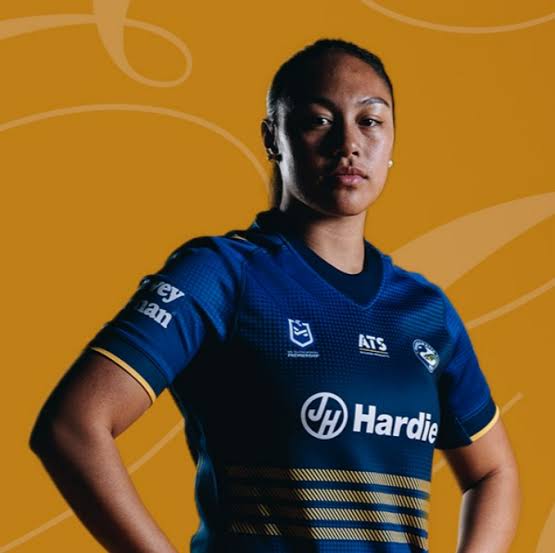In a dramatic turn of events during the Parramatta Eels’ recent NRL clash, halfback Mitchell Moses found himself at the center of controversy following an alleged obstruction incident involving Dolphins forward Tom Gilbert. The altercation occurred as Moses attempted to execute a strategic play, only to be impeded by Gilbert’s positioning. The obstruction disrupted the Eels’ momentum, leading Moses to immediately challenge the decision through the captain’s challenge system.
The captain’s challenge, a mechanism allowing team captains to contest certain referee decisions, was introduced to enhance fairness and accuracy in officiating. However, in this instance, the challenge did not yield the desired outcome for the Eels. Upon review, the match officials upheld the original call, determining that Gilbert’s actions did not constitute a penalty-worthy obstruction. This decision left Moses visibly frustrated, as he believed the interference had a significant impact on the play’s execution.
Moses’ reaction was one of palpable disappointment. Known for his competitive spirit and leadership on the field, he expressed his discontent with the ruling, emphasizing the importance of consistency in officiating. “It’s crucial for the integrity of the game that these decisions are made correctly,” Moses stated post-match. His sentiments were echoed by Eels coach Jason Ryles, who highlighted the need for clear guidelines on obstruction interpretations to avoid such contentious situations.

This incident is not the first time Moses has been involved in obstruction-related controversies. In a previous match against the Penrith Panthers, a similar scenario unfolded where a potential try was disallowed due to an obstruction call involving Moses. These recurring situations have sparked discussions among fans and analysts about the clarity and consistency of obstruction rules within the NRL framework.
The failed captain’s challenge also brings into focus the effectiveness of the system. While designed to rectify clear errors, its success heavily relies on the subjective interpretation of complex in-game situations. Critics argue that the system, while beneficial in theory, often falls short in practice due to the nuanced nature of rugby league plays. Supporters, however, maintain that it provides teams with a valuable tool to contest dubious decisions.
For the Eels, the incident had immediate ramifications. The unsuccessful challenge not only failed to overturn the call but also resulted in the loss of their sole challenge for the remainder of the match. This limitation potentially affected their ability to contest subsequent contentious decisions, placing them at a strategic disadvantage. Such scenarios underscore the high stakes associated with utilizing the captain’s challenge.
Looking ahead, the NRL may need to revisit the guidelines surrounding obstruction calls and the captain’s challenge system. Ensuring that players, coaches, and officials have a unified understanding of the rules is paramount to maintaining the sport’s integrity. Implementing clearer definitions and providing comprehensive training could mitigate future disputes and enhance the overall fairness of the game.
In conclusion, the obstruction drama involving Mitchell Moses and Tom Gilbert serves as a catalyst for broader discussions about rule clarity and officiating consistency in the NRL. As the league continues to evolve, addressing these concerns will be essential in preserving the competitive balance and credibility of rugby league. For players like Moses, the hope remains that future matches will be adjudicated with greater precision, allowing the focus to remain on the athletic prowess displayed on the field.



